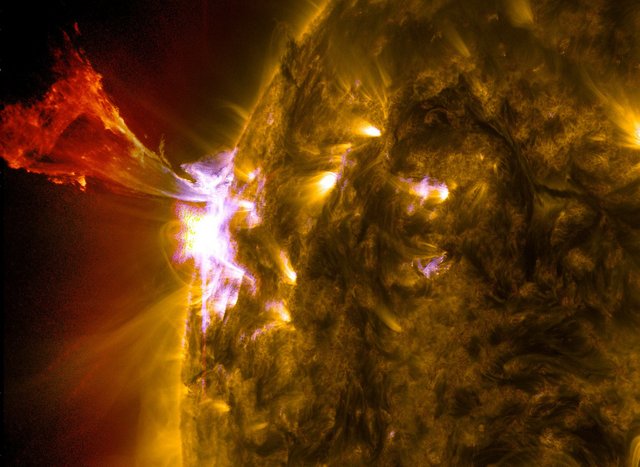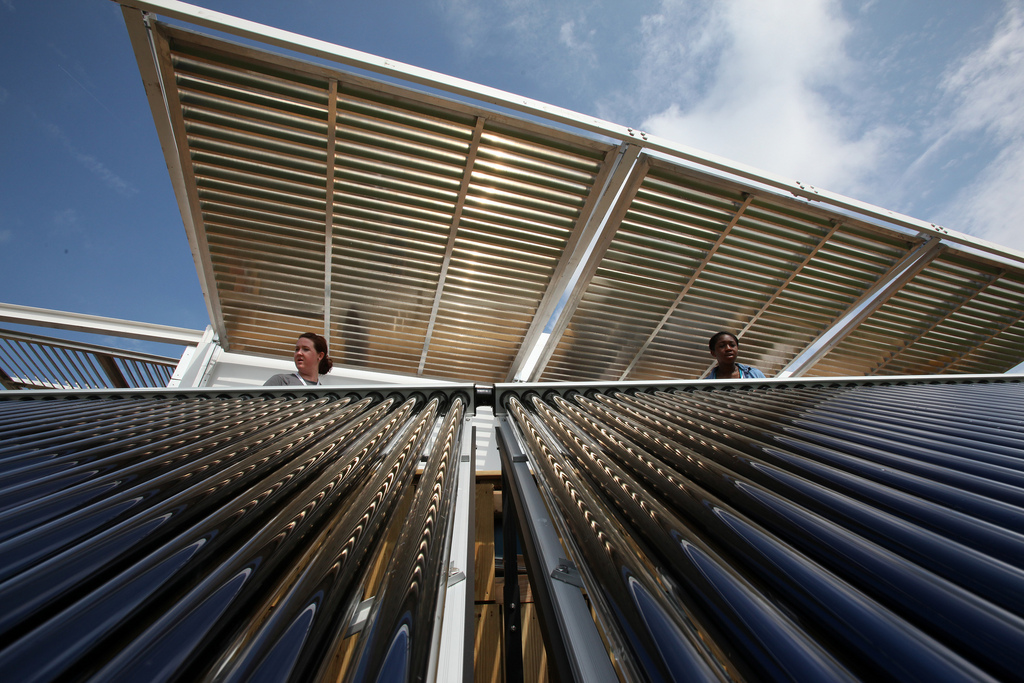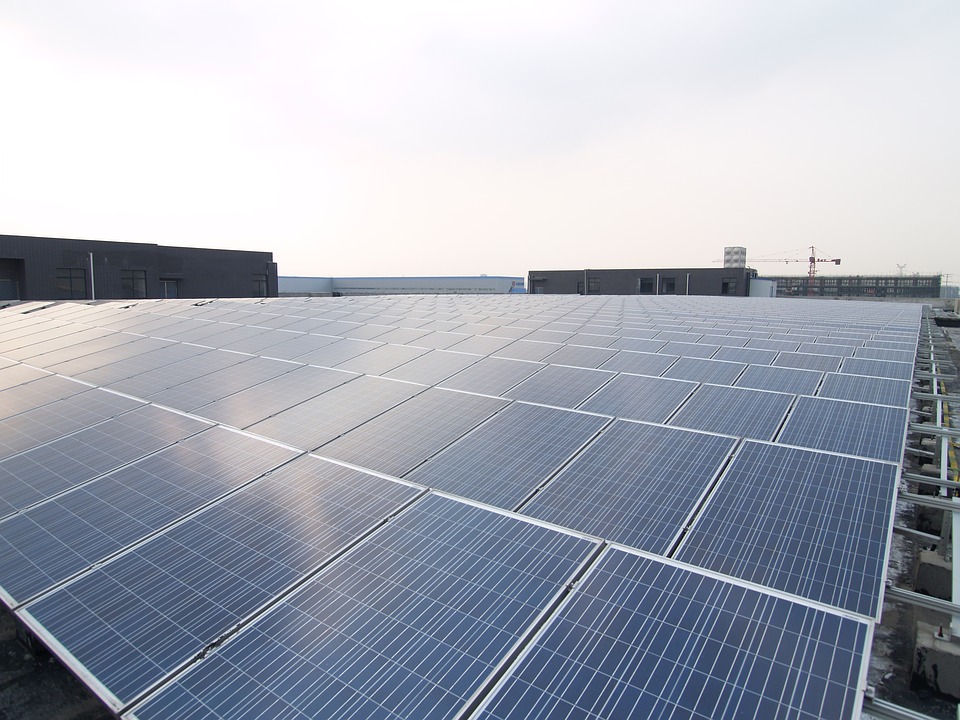INTO SOLAR POWER PLANTS: AN UNCONVENTIONAL APPROACH TO ELECTRICITY GENERATION (HOW IT WORKS)
Hitherto, in previous posts, we have spoken extensively on methods of generating electricity using conventional approaches e.g. Coal-fired power plants, Hydropower plants, etc. Though we would still discuss more on that in the future, however today we would be looking at unconventional means of power generation. Before we proceed, let's understand the concept of conventional and unconventional energy sources
CONVENTIONAL SOURCES VERSUS UNCONVENTIONAL SOURCES.
Let’s first recall our universal principle of conservation of energy which I quote thus;
“The quantity of energy in any closed system will always remain constant although has the ability to exist in different forms.”
Understanding this would make us understand that energy source conversion is the major means of generating electrical energy, these base energy sources are the subject of interest as touching whether the source is conventional or the source is unconventional. Read Slowly
The major mark of conventional sources lies in the fact that the sources are not renewable e.g fossil fuels, radioactive element, cow dung, biological wastes etc. such as uranium plutonium and other unrenewable sources. However, in non- conventional sources, the primary energy source to be transformed into electrical energy is renewable e.g. solar and wind turbines.
Also while conventional sources have been discovered and been in use a long time ago, non-conventional sources has been harnessed just few decades. More so conventional sources are mainly used for industrial and commercial purposes while unconventional sources mainly find its applications domestically.
In a world where majority is already sensitized about the hazards of harmful atmospheric discharges, even with the precautions taken to minimize this harmful discharge in power plants as discussed in my previous post on thermal power plants, the cleanest thermal power plant still releases 10% harmful gases into the atmosphere, this brings me to my next point which says that Unconventional power plants are cleaner than Conventional power plants. This is the main reason conventional power stations are not domestic but rather sited outside populated areas. Of course conventional power plants, are more expensive requiring a high cost of maintenance, this is not to say that unconventional sources are cheap, but in comparison is considered relatively cheap.
SOLAR POWER GENERATION FROM FIRST PRINCIPLE.
Great work has been done by my fellow Steemians particularly STEM writers in bringing to our understanding the working principle of the solar power system, but today we would be starting from the first principles of solar electricity generation.
INSOLATION
Without this phenomenon, we would not even have an energy source to convert into electricity, Now we must have learnt that though the sun has not yet been reached for exploration but has been seen to be one massive reactor in which nuclear reaction takes place, now we know that when nuclear reaction takes place, energy is emitted in form of radiation, this energy serves some planets due to proximity, due to different planet proximity to the sun, the measure of radiation reaching each planet in the galaxy varies,

Photon emission from sun: flickr NASA/Goddard/SDO Attribution CC By 2.0
Insolation is therefore defined as amount of radiation energy while measuring from the surface of the earth per square metre per minute While the amount of energy produced at the surface of the sun is constant at 6.33*107 W/m2, when the sun travels through to the earth surface, its radiation intensity reduces with distance and some other varying factors it is therefore safe to note that insolation varies due to the following factors
- Angle of with which the sun touches the earth surface
- Period of daylight
- As earlier stated; the proximity between the sun and earth surface
The highest value of insolation at any day is at noon where the sun is directly above the earth surface. Professional solar panel installers learnt to position the solar panels in such a way as to enjoy maximal insolation.
METHODS OF CONVERTING SOLAR ENERGY INTO ELECTRICAL ENERGY
At this point, it is therefore good to note that the sun releases two forms of unconventional energy,
- The heat energy and
- Electromagnetic rays in form .
There are therefore 2 methods of harnessing this forms of energy,
You can harness the heat energy using a thermal solar panel and use it to power a turbine, (As in the case of thermal power plants) the heat from the sun is used to create steam and power the turbine which of course generate electricity.
You can also harness the electromagnetic energy radiated on the earth surface by using the photovoltaic solar module.
The first method would generate AC while the second method would generate DC.
Now we would look at the mode of operation of both methods
THERMAL SOLAR PANELS AND TURBINES
We won’t be dwelling much on the turbine aspect as it has been discussed in previous posts, therefore we would move straight into the working of solar thermal panels.
I remember an experiment I did in secondary school which almost made me get my hand burnt, Under the sun, I took a converging lens and placed it under the influence of the sun at one side and at the other side I placed my hands there, well I don’t need to tell you the rest of the story. Or I do, the heat from the sun was focused on my hands and almost burnt it.

Thermal collector system (Credit: Stefano Paltera/U.S. Department of Energy Solar Decathlon) CCA 2.0
Solar thermal panels works just the same way, the panels are made of lens and mirrors suitable for collecting the heat from the sun, However, in this case it is engineered in a way such that even larger amount of heat are generated, large enough to power the Solar turbines.
This type of energy is known as STE (Solar Thermal Energy)
Solar Turbine Generators
This piece of equipment is used to convert the steam generated from the thermal generator into usable electrical energy.
Solar thermal energy (STE) not only finds application in electricity generation, but also in systems that require heating, e.g. solar heaters.
ELECTRICITY FROM PHOTOVOLTAIC MODULES
The action of solar panels involves collection and conversion of solar radiation (visible light) into electrical energy. As the name Photo-Voltaic module implies, **Photo means light ** and voltaic means electricity. So the process is as simple as collecting light and releasing electricity.
THE WORKING OF PV MODULES
Understanding of the working of solar panel of course starts from understanding the nature of the panel, why is it that not just any metal can do the work of a solar panel? The answer lies in the nature of composition of the panel. Let’s do a little chemistry.
Most solar panels are basically made up of silicon,
WHY SILICON
Like I said, it is more about considering the atomic structure of silicon, silicon is a group four (IV) element, it is tetravalent in nature, i.e. it has four valence electron in its outermost shell, since it is number 14 on the periodic table, it has 14 protons and 14 electrons with 4 valence electron on its outermost shell, Since the atomic outermost shell allows for 8 electrons, we see that silicon needs 4 extra electrons to attain stability. This extra four electrons comes from its neighboring silicon atoms in the structure, i.e. The four valence electron would bond with its neighboring four empty electrons to attain stability.
Eventually we see that silicon will have no net charge, as it has attained stability due to its tetravalent structure. Charge therefore needs to be generated, and this is done by a process called doping, doping simply means adding impurity atoms to silicon, when this is done, the conductivity of silicon will improve to a particular degree and would be able to conduct charge from photons, Phosphorus (GROUP 5) Is commonly used for this doping process due to its pentavalent nature, (having 5 electrons in its outermost shell), when phosphorus is doped with the silicon atom, the extra fifth atom will become a free moving electron. This is known as an n-type semi-conductor owing to the extra negative electron added to it.
However modern PV modules are not only doped with n-type material but also a p-type material such as Boron, doing this would give the material extra positive holes. So we have a combination of both p-type(holes) and n-type(electron) silicon impurity, this helps to improve conduction of the modules.
![]()
Silicon solar cell structure Wikimedia commons under GNU license:
Therefore, the panels work by putting the p-type impurity panel together with the n-type impurity panel, this will form a p-n junction, when electromagnetic rays from the sun (photon) hits this pv module at the required frequency and wavelength, of course, the photon will come with such an energy as to energize the electrons now in the p-type side of the panel, in the attempt of this electrons to move back to the n-type region of the junction, the charge is collected by a conductor and is converted into electric current,
NOTE that all this happens with the speed of light
The remaining part is the transmission of this current through charge controllers into battery and inverter then to the load which is not part of the scope of this study, which I might however write on in a later time.
CONCLUSION
The basic thing we need to note about the working of PV modules is that photons from the sun transfers energy to an electron in the panel, after which becomes excited and tends to move towards the hole region (forward bias) but in its movement, there is a circuit in place to capture the electrons thereby converting it into current.
SIMPLE RIGHT
We also need to note that the solar panel that would allow every photons to send electrons to the circuit is yet to be invented, majority of the solar panels in circulation have an efficiency of about 15%. While the other photon are counted as losses which either bounces back into the atmosphere or is converted into heat energy.
REFERENCES
https://www.turbinegenerator.org/solar/
How solar system produce energy
If you write STEM (Science, Technology, Engineering, and Mathematics) related posts, consider joining #steemSTEM on steemit chat or discord here. If you are from Nigeria, you may want to include the #stemng tag in your post. You can visit this blog by @stemng for more details.


The sun has enormous power to aid in our solar panel system. It's one of the cleanest energy resources for us but it comes with a lot of price. Thanks for the explanation :)
Thats very true, Manufcturing of a panel comes with a price, Exploiting the energy of the sun is Expensive business
Thanks for stopping by
What a great description of how solar energy is created and used. As we start to deplete the world's natural resources it will be important to look to more reusable and sustainable sources of energy.
Am glad you took your time to read the description. Of a truth further research still needs to be done on Solar technology.
I guess nature has given us all...
Great insight...
Yea Thanks fpr stopping by
You have done a great job explaining how energy is created using solar systems. How do you reckon we improve the efficiency of the solar panels?
Wow.. Thanks for this.
The efficiency of solar panels lies greatly in the nature of the panel.
However there are already certain plants whose efficiency is up to 60%
Though with high cost implication
Providing constant electricity with low cost is the ultimate goal of any power generating source.
Such an expository writing on solar as a power source. Quite informative.
Comment removed